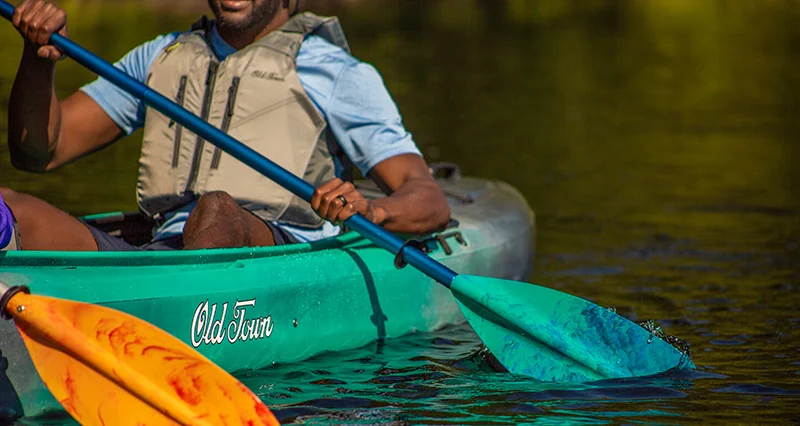Life Jacket Safety Resources for Kayaks and Canoes
Kayaking, Canoeing, boating, and fishing are great ways to enjoy the outdoors. These are important stress-relieving activities that provide exercise and allow us to connect with nature and each other. On the nice days when the sun is warm and the spray is refreshing, It is tempting to take your life jacket off or not wear one at all – but according to the US Coast Guard, most boating-related drownings happen on nice days and by those considered good swimmers. In fact, according to US Coast Guard Stats (2019), drowning resulted in 79% of all recreational boating deaths. Of those, 86% were not wearing their life jackets. Two-thirds were reported as being "good" swimmers.
Life jackets come in many varieties. Though we manufacture our own line of comfortable, breathable life jackets suited for paddlesports and our watercrafts, the best lifejacket for you is the one that you will wear every time you are out on the water. Shop Old Town Life Jackets.
RESOURCES FOR LIFE JACKET SAFETY
TAKING CARE OF YOUR LIFE JACKET
- Follow these tips to ensure your lifejacket stays in good, usable condition:
- Do not alter your lifejacket. If yours doesn't fit, get one that does. An altered lifejacket may not save your life.
- Do not put heavy objects on your lifejacket or use it for a kneeling pad or boat fender. Lifejackets lose buoyancy when crushed.
- Let your lifejacket drip dry thoroughly before putting it away. Always stow it in a well ventilated place.
- Never dry your lifejacket on a radiator, heater or any other direct heat source.
- Put your name on your lifejacket if only you wear it.
- Follow the washing instructions on the label. Most lifejackets can be washed by hand in a mild detergent and hung to dry in a well ventilated area out of any direct sunlight.
CHECKING YOUR LIFE JACKET
- Check your lifejacket often for rips, tears and holes. Also check to see that seams, fabric straps and hardware are okay.
- Give your lifejacket belts and tie tapes a quick, hard pull to make sure they are secure. You should find no signs of waterlogging, mildew odor or shrinkage of the buoyant materials.
- Fading material could indicate loss of strength. A weathered lifejacket might tear more easily, resulting in loss of flotation material.
- Store your lifejacket in a dry, cool, dark place. If the color of your lifejacket is fading, check its strength or replace it.
- Test each lifejacket at the start of each season. The law says your lifejackets must be in good shape before you use your boat. Lifejackets in poor shape should be cut up and thrown away.
TAKE THE WEAR IT PLEDGE
Be an example and saves lives. Recreational boating and water activities are enjoyed by millions of Americans each year. Boating safety advocates recommend all boaters and passengers not only have a life jacket, but wear it at all times while boating. Regardless of your age or experience level, the data shows the life jackets save lives. Take the pledge to always Wear It while boating.







